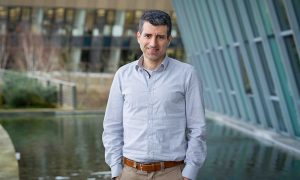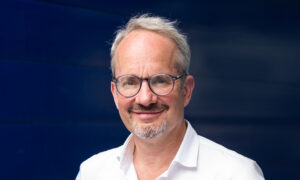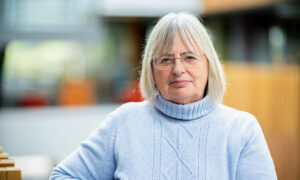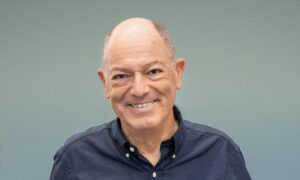
Edith Heard: what I’ve learned
Departing Director General reflects on legacy, leadership, and the power of connection
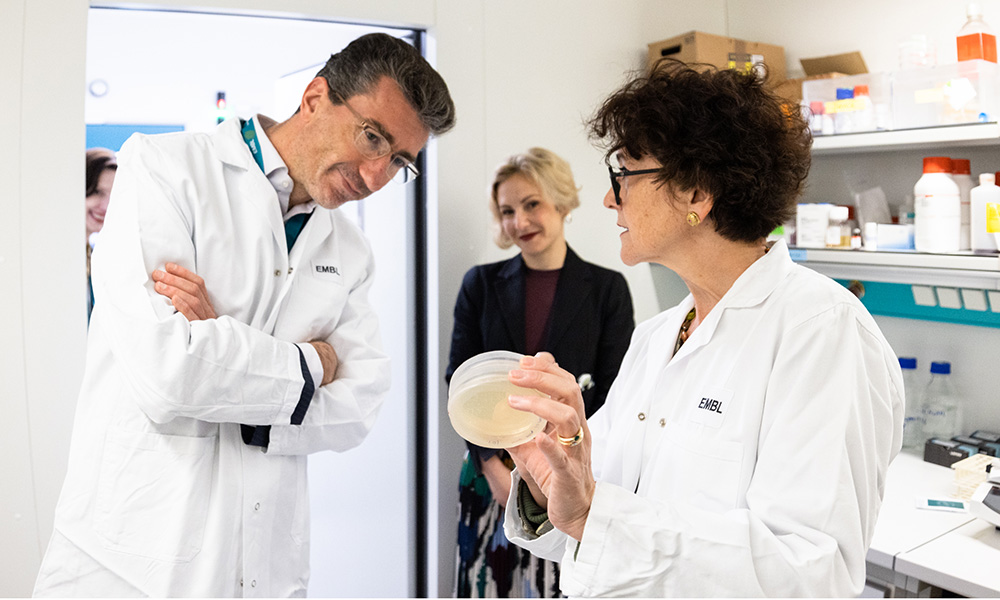
In 2019, EMBL’s first female Director General arrived in Heidelberg with a vision of building on EMBL’s well-known strengths and talented people to establish a societally relevant, increasingly multidisciplinary, cutting-edge programme.
Edith Heard could hardly have known that just a year later, a pandemic would throw a wrench in those plans. However, it would also solidify the direction she hoped to help lead EMBL in.
“The pandemic threw us – me – into the deep end as we grappled with what it means to run an organisation that cannot switch off simply because the rest of the world is switching off,” Heard said.
She led EMBL, with its staff spread over six sites, through rethinking how to be safe while still delivering on its missions where it could. For example, she enabled training teams to figure out how to hold courses and conferences when no one could come in person. She offered leadership and support to services that could and would play a role in the pandemic. She oversaw operational course corrections as a majority of staff worked remotely, nearly 100 % of the time. Simultaneously, she still worked on her plan to bring to life a new EMBL programme that would study ‘life in context’ and broaden the organisation’s research perspective to include planetary biology.
“The pandemic forced me to take stock of everything at the same time in a rapid-fire way, so in that sense, I learned about EMBL quite quickly,” she said. “But it was a distressing time for all of us. This was then immediately followed by a financial crisis, due to the outbreak of war in Ukraine, that further distorted plans.”
EMBL overcame the unexpected difficulties and was impressively successful, launching its new programme ‘Molecules to Ecosystems’ and a new era of ‘One EMBL’.
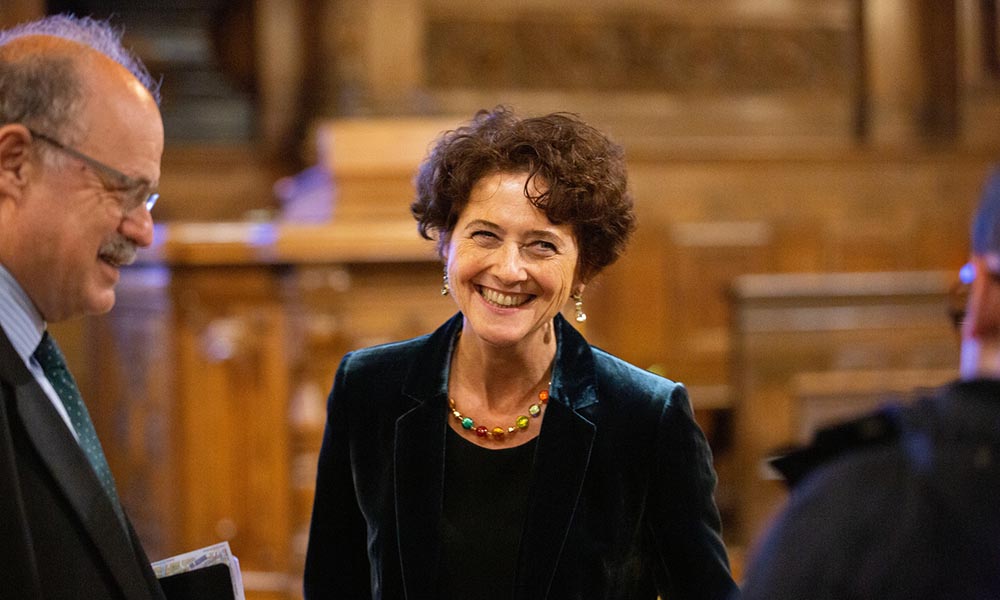
In April 2025, Heard began the transition from EMBL to the Francis Crick Institute, which she will be leading as its Director and Chief Executive Officer from September 2025. In a final interview, she talked about her legacy of the ‘Molecules to Ecosystems’ programme, a ‘One EMBL’ initiative that continues to encourage collaboration among sites, an increased emphasis on external partnerships, and lessons she’s learned throughout her career, presented here in her own words.
An EMBL programme ‘in context’
The idea started because I am an epigeneticist, and I think about the interface of genetics and development in the context of the environment. The year before I started at EMBL, I had become very interested in the impact of the environment on biodiversity and realised how little we know at the molecular level about how this happens in nature. So my challenge to EMBL was to think out of the box about this. It was amazing to see how easily and quickly the most brilliant ideas and science came to be! That is the great power of EMBL: a spirit of creativity, enthusiasm, and collaboration that is natural and easy to spark!
Countries are focusing more on their own capabilities. That makes shared scientific infrastructure, like EMBL, even more essential. Pressures on funding and resources across Europe made it even more important for EMBL to create added value in research, services, training, innovation, and collaboration, and to go beyond our known strengths in structural biology, cell biology, genomics, and many other areas.
EMBL has to be cutting edge. It’s in its DNA. Before I even got here, I was told that EMBL scientists like to think differently. That wasn’t wrong. The ‘Molecules to Ecosystems’ programme tapped into corners of EMBL that hadn’t always had a voice. That mattered. It was not only about researchers doing excellent work that EMBL was renowned for. It was about everyone — administrative staff, service teams, users, across all six sites — having a seat at the table.

In addition to applying our work to pressing societal problems, I thought our programme should provide opportunities to help the organisation modernise operations through things like digitalisation and sustainability.
My biggest legacy is the programme. It’s already had significant impacts, and it has been wonderful to see how widespread brainstorming got distilled into a programme with impacts on the way science is now being done in different parts of Europe. I really believe that EMBL has instigated a new era of European molecular life sciences – just when it was needed.
The ‘Molecules to Ecosystems’ programme has been ambitious. If not for another important initiative under my leadership, ‘One EMBL’, we wouldn’t have pulled it off. We’d have ended up with less science, less funding, and less interest. ‘One EMBL’ encourages EMBL’s six sites to think and operate together more closely.
Community, connections, collaboration
Science is always better when it’s bigger and more collaborative. I hope that through ‘One EMBL’, the organisation has become more united, more inclusive, more collaborative, and more externally facing. Small, subtle changes helped communicate that we are all part of the same organisation. Each EMBL site has its unique specialities and technologies, so they can be much more than the sum of their parts.
The programme’s transversal themes encouraged more coordination between sites. Scientists, tech developers, operational and administrative staff began working together much more than before. The pandemic, too, levelled the playing field, as everyone was forced to connect virtually.
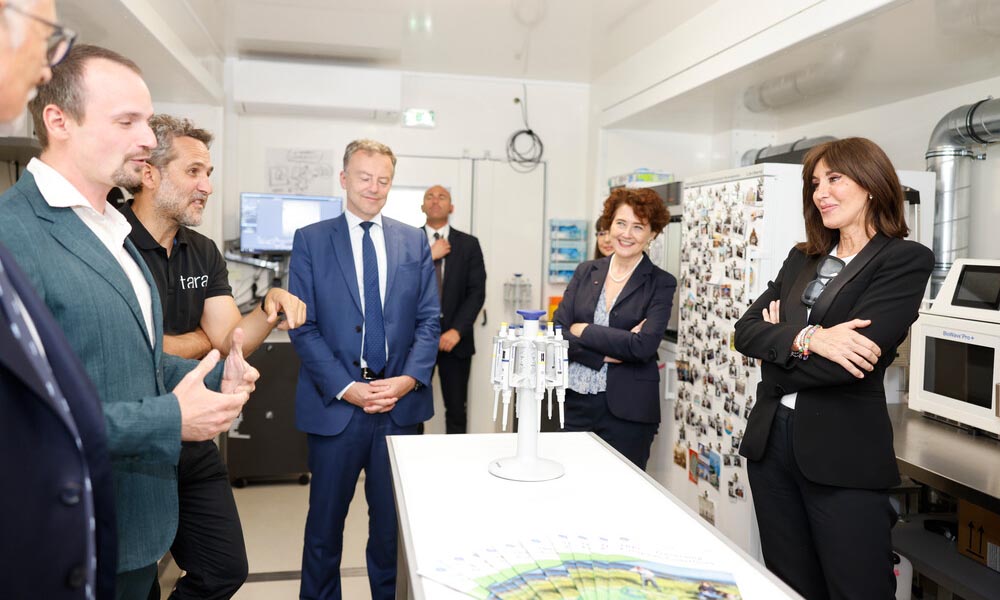
The six sites are both a challenge and an opportunity. It’s hard for a director general to have a ‘personal touch’ when you can’t be everywhere. Virtual meeting set-ups help, but they aren’t enough to build or sustain connections. Nothing beats sitting down together – whether it’s writing a grant together or chatting over a coffee or drink. I tried to install as many new mechanisms as possible, the transversal themes being one, to encourage people to work across all of our sites.
Science is poorer without this kind of personal connectivity. So, as much as the pandemic levelled the playing field, it had its limits. I wanted to provide a professionally nurturing environment where scientists could be even more creative, more up-to-date, and raise the bar.
Science cannot happen in isolation. The new programme allowed us to collaborate not only internally, but also with member state scientists in the most interdisciplinary and inclusive ways. The transversal themes really helped this, and our flagship project TREC is a perfect example, facilitating new inter-European collaborations that introduced more experts from different countries and areas of science than ever before. I hope this is just the beginning for a more united internal EMBL spirit, as well as an even more outward-facing EMBL.
Our relationships with organisations in member states and the European Commission are closer than ever before. I made it a mission to nurture deeper ties in these places. We embarked on several new collaborative projects that allowed us to show up – physically, tangibly – in places that matter.
Some smaller countries especially rely on EMBL for the full spectrum of molecular life science services. We help them do what they couldn’t do alone. That’s an important responsibility. And the bigger countries benefit from the diversity of talent and ideas. EMBL is an accelerator of science for its member states in a multitude of ways, and this is both unique and very precious!
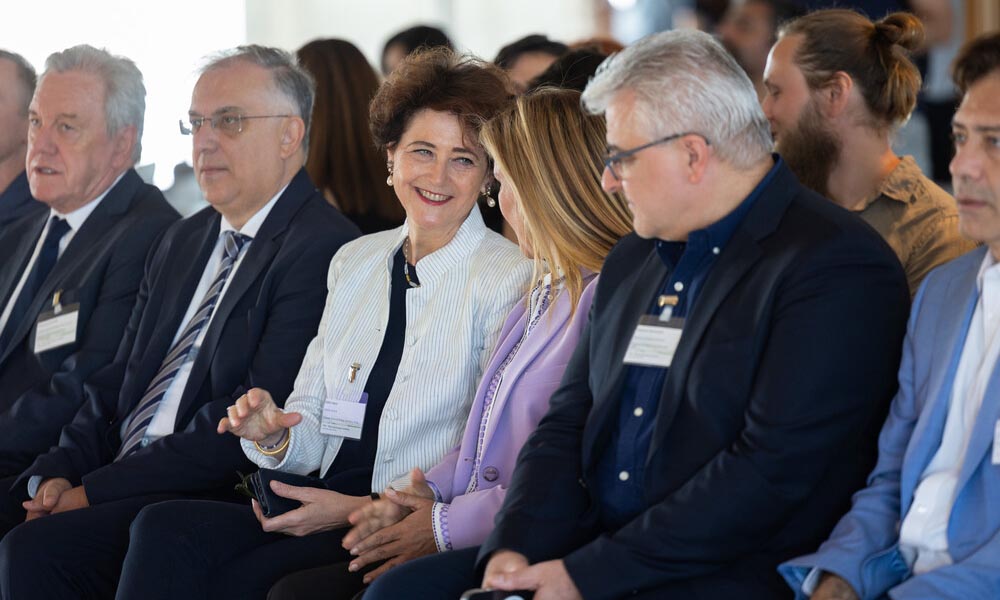
The future of EMBL
People are EMBL’s magic. EMBL people possess an ever-present, intrinsic creativity. You can go to someone with a problem or a question, and they immediately come up with ideas and solutions.
EMBL possesses contagious pride and excitement. Yes, you can find this elsewhere, too, but I think the nine-year turnover allows enthusiasm to stay fresh. Also, because EMBL provides training and services, not just research, its influence goes beyond just the staff here. When new scientists visit or arrive, you will overhear conversations along the lines of, “Let me show you what my latest technology can do,” and “If this doesn’t work for you, we’ll find a way to make it work.” Yes, that’s what I’ll miss. Colleagues aren’t just going to show you how something works and walk away. You’re in it together, and there’s an enthusiasm to problem-solve. It’s not just coming up with ideas, but seeing them through and delivering on the proposed solutions.
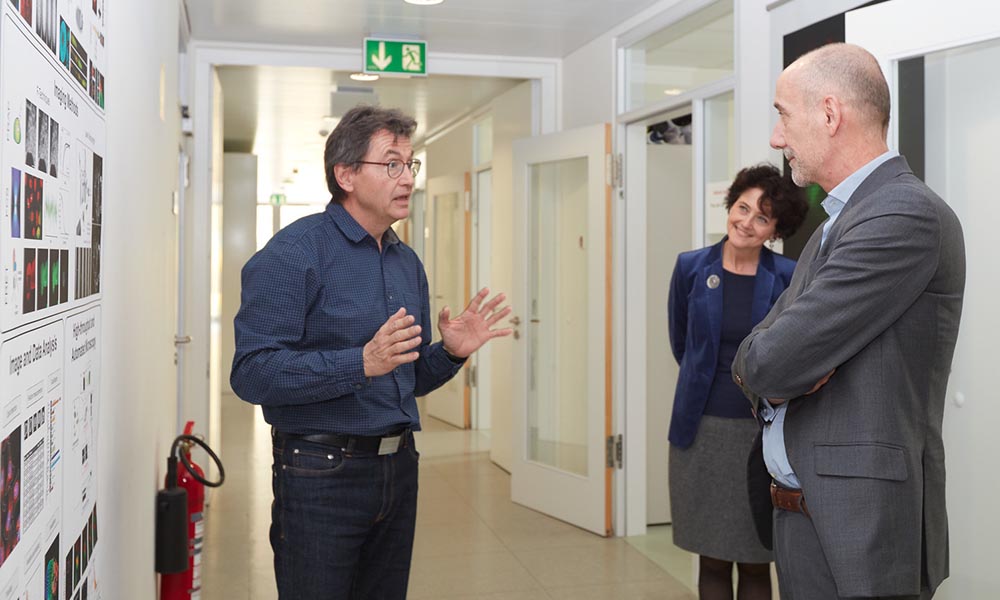
I think EMBL is starting several new scientific journeys. At EMBL, but also among collaborating organisations, I’ve heard excitement for the opportunities moving forward with the ‘Molecules to Ecosystems’ programme. At the start, people said the programme was so ambitious, it could provide direction for the next 50 years, not just five. Thinking about life in context will continue. It was an obvious next step to EMBL’s work; many member states are going down this road as well.
AI is on the tip of everyone’s tongue. For some time, EMBL scientists have been doing machine learning, computational approaches, and statistical modelling, once again leading the way. A steady flow of new talent puts EMBL in a prime position for leadership. I do feel that the future does lie in a new era of how we do our science – not just using AI, but developing new, creative ways to harness it.
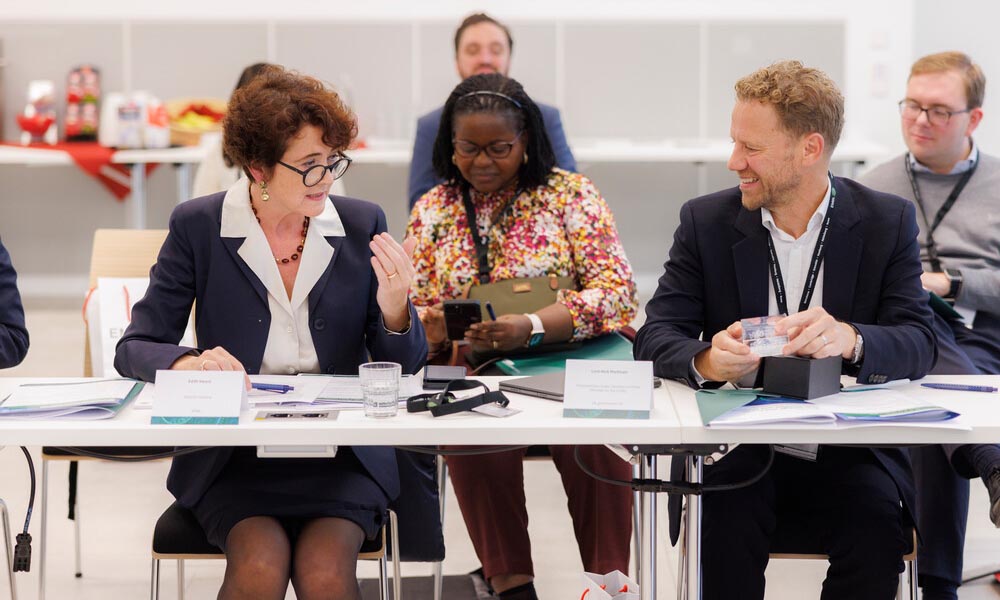
I believe deeply that European science can be at the global forefront right now, and I think EMBL, specifically, is in a good place to do it. But it needs a scientist at the helm – one whose outlook is global and visionary.
Life and career lessons
My PhD supervisor said to me, “Edith, everyone needs mentors, especially women scientists. Probably more than men. So, make it your business to always have mentors around you.”
On a subconscious level, I took this to heart and always found myself surrounded by trusted people whom I respected and felt comfortable asking questions – as scientists and as human beings. Throughout my career, that has been vital to getting through some of the most difficult moments, whether scientific or overseeing the ‘business’ of science. That’s probably the best bit of advice I got as a female scientist who went on to become a science leader.
No matter how challenging it can be to fit it all in as a leader of a research organisation, you still need to do your own science. It keeps you connected so you can relate to what’s happening. Science moves so fast now – especially in life sciences – that you can very rapidly disconnect. My lab has provided both a sanity check and a creative outlet.
Our profession still has a way to go in its support for women and other underrepresented populations. But science is also mirroring what’s going on in the rest of society. We talk about the glass ceiling, but the challenge goes beyond breaking glass. There’s another, less talked about challenge that exists in the culture – even once you’ve gone through the glass – and this has to do with the receptiveness to female leaders’ leadership. Earning respect, trust, and support to lead effectively takes longer and is more arduous for women.
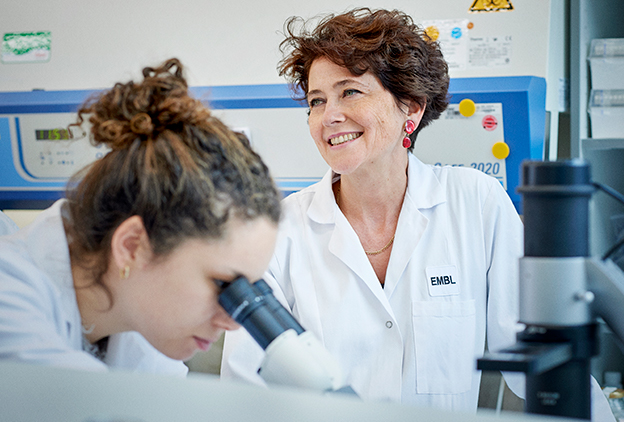
The advice I give young scientists is to resist the naysayers. If you think a research path is worth exploring, follow it. Don’t be distracted by those who say you shouldn’t or can’t go in a certain research direction. Many people will tell you what is expected and ‘how things are done’, so we have to believe in ourselves. That’s an important lesson to learn.
An EMBL Director General moves on
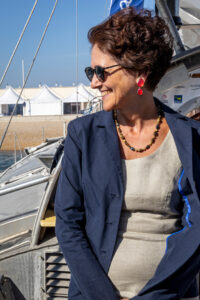
Getting to know EMBL at many different levels mattered to me. The ‘Meet the DG’ sessions and visits to the different sites helped me meet people across the whole organisation, but it never felt like I had enough personal contact during my time here, particularly during the pandemic years. So, I’ll leave EMBL feeling like I would have liked to spend more time with so many people here. The Crick – especially since it’s all in one location – should allow for much more in-person engagement, and I’m determined to get to know people to hear about what they see as priorities and opportunities. I want to get to know people better.
I wasn’t thinking I would take on another big leadership position, but, honestly, life surprises, and this was a very special opportunity as a last step in my career.
The experience leading EMBL has been multi-dimensional. I’ll be returning to the United Kingdom and the city where I was born and raised, to an institute where I did my PhD. But now I return with international and multidisciplinary experience and many contacts and bridges, thanks to my EMBL experiences.
I’m looking ahead, but I’m also not one of these scientists who wants to stay on forever. I do actually intend to retire. I think it’s healthy for people to move on, and I’m happy to go to the Crick, help move things forward, have a good time scientifically, but also retire when the time is right. I have a whole list of things I want to do when I retire.
